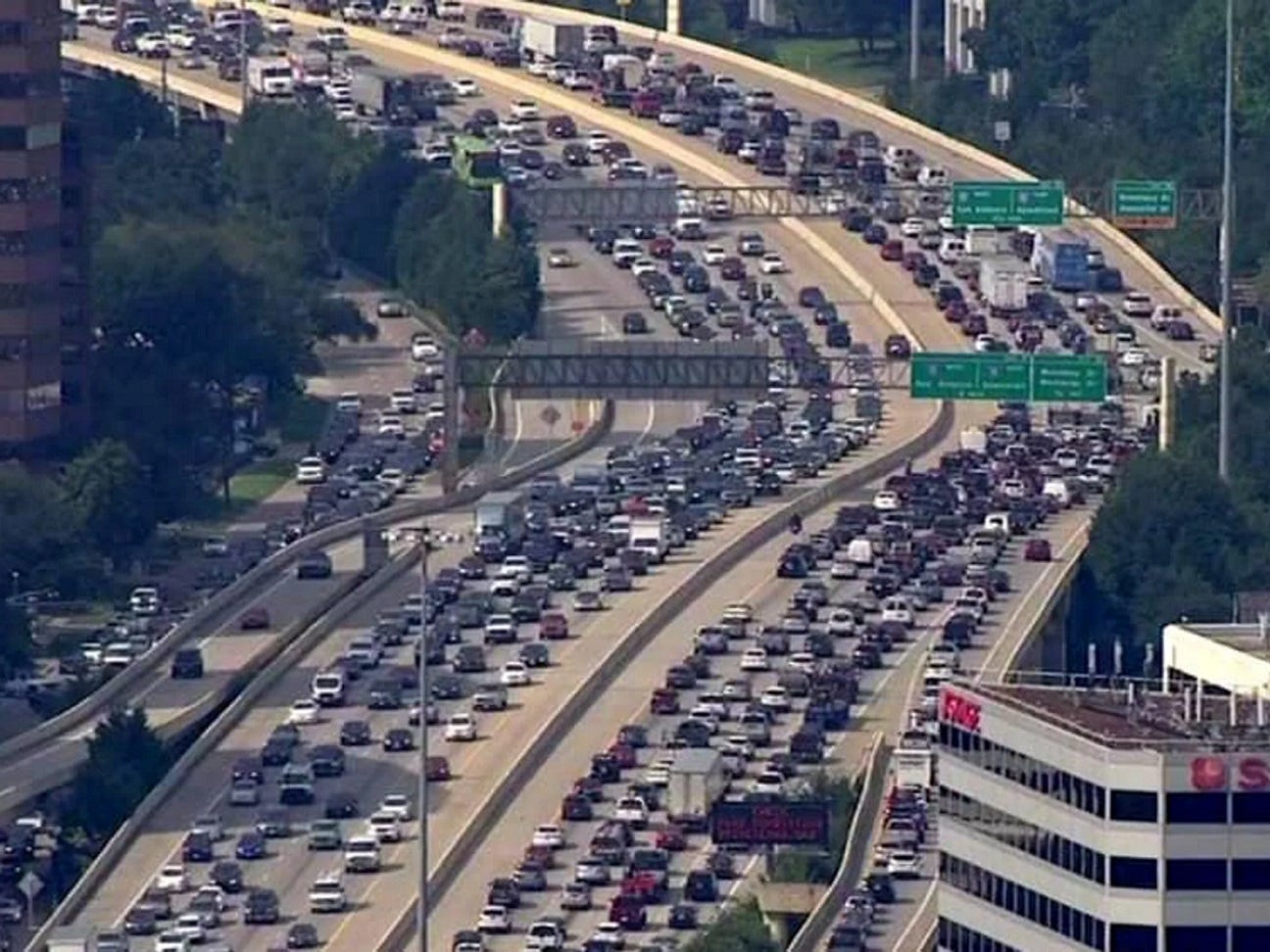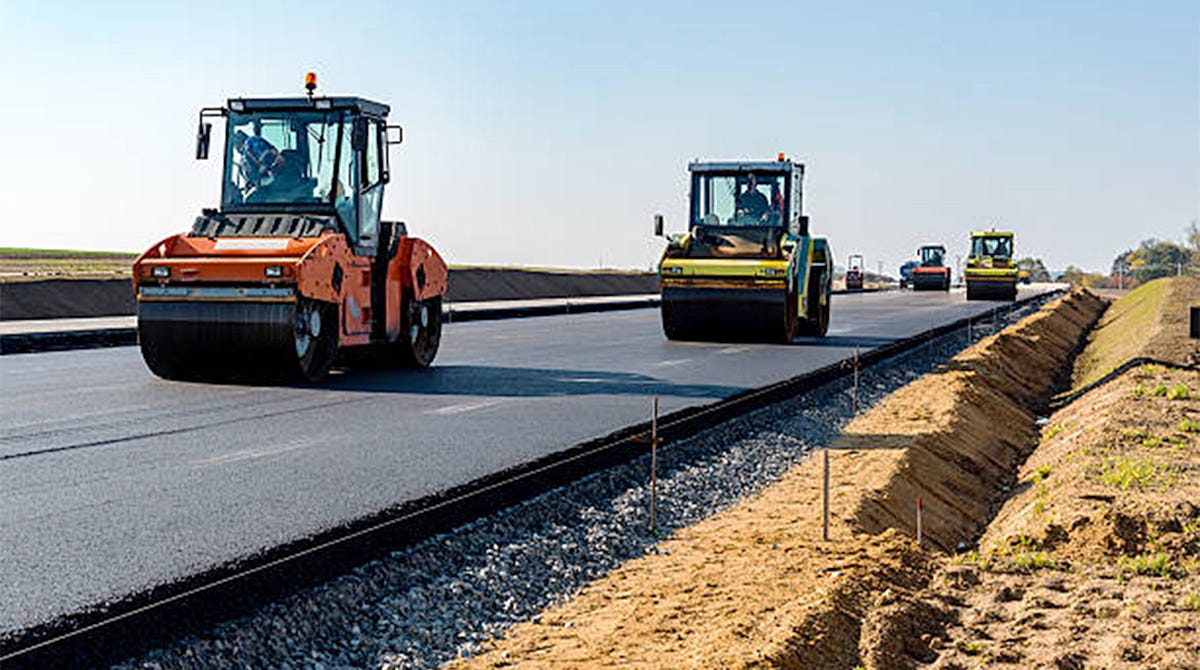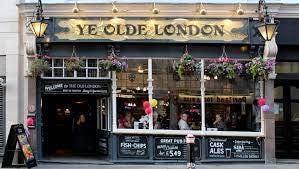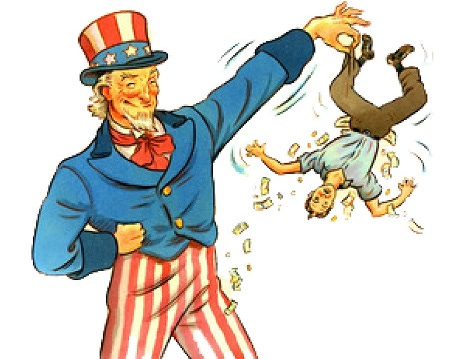This article could apply to pretty much any city in the U.S. (or for that matter, any city in the world). But for today, we will focus on the city of Houston, Texas, where I lived for thirty years.
So here’s the deal: the City of Houston and the Texas Department of Transportation are planning to completely re-build and re-route Interstate 45 where it runs through through downtown. It will be “one of the biggest infrastructure projects that Houston will see in a generation.” Here are some of the project’s stated goals:
Strengthen Houston’s economy
Reduce flooding
Make travel safer
Provide long term capacity for all users
Serve the neighborhoods along the corridor
Ensure evacuation routes
Wow - with all those amazing benefits, who could possibly disagree? What could possibly go wrong?
Interstate 45 is a monster of a highway, originating in Dallas and running all the way to Galveston. The last major (re)construction project was completed in 2017. Today, including the main lanes, the High Occupancy Vehicle (HOV) lanes, and the feeder roads, it spans twenty lanes in some sections of downtown Houston. From side to side, that’s pavement as far as the eye can see.
But as anyone who uses it regularly well knows: during peak times, traffic slows to a crawl. Heaven help us all if there’s a wreck; or foul weather.
And so, in typical bureaucratic-think, the obvious solution is: tear it down and re-build it again! Make it bigger and wider! Pave, baby, pave! The cost is “upwards of $10 billion,” and will take god-only-knows how many years to complete.
Faithful readers know by now where I’m going. This idea of trying to alleviate congestion via perpetual highway construction/re-construction is insane! Should it not be obvious that building more and bigger roads just encourages all of us drive longer and further? Build it, and they will come!
In addition to the enormous cost to us taxpayers, there are other big problems also, such as the tearing up previous pristine nature to be replaced with pavement. There’s increased noise. And the destruction of homes and businesses and parks and greenspace to make way.
Meanwhile, the government keeps mandating more and more stringent vehicle mileage and emissions standards, ostensibly to reduce pollution, mitigate global warming, etc. But what good does it do to double per-vehicle mileage while simultaneously doubling the number of vehicles on the road? This is progress?
A less obvious problem is how encouraging vehicle dependence destroys our communities. In an earlier era, people did their shopping at small local establishments, such as “mom and pop” stores, fresh produce stands, quaint specialty outlets, and friendly neighborhood service providers - all within walking distance. Today, these have been replaced with monster-sized Big Box shopping centers with massive parking lots that can hold a thousand cars. Need a loaf of bread? You must get in your car and drive to the mega-grocer.
How did we come to this? Well, it all started with the notion that transportation is a governmental responsibility. The politicians and bureaucrats decided that private automobiles and cargo trucks are The Way To Go for transporting passengers and freight. So they started building roads, funding them with taxpayer dollars, and telling the public that using them was “free”.
Is it any surprise how things turned out?
Consider the private car, and the cargo truck. They are expensive, dangerous, dirty, and require vast amount of pavement for driving and parking. A typical car consumes about one hundred square feet of roadway. Trucks - a heckuva lot more. And that doesn’t count the space between them. This is the best our modern technological society can devise?
There are alternatives, of course. Mass transit, in the form of planes, trains, buses, and ships, is one example that gives a lot more bang for the buck when it comes to moving people and freight.
So am I saying that, instead of taxing us to pay for roads and highways, that the government should tax us to pay for mass transit? Um, no. What I am saying is that transportation is a need, an economic resource, a service that all humans want and demand, and are willing to pay for. And history has shown repeatedly that, when it comes to providing goods and services, the free market is the most efficient and effective way to get it done. The worst possible way is for government to socialize it.
It is nigh impossible for any entrepreneur to offer transportation alternatives, because they would be competing with “free” government roads. But imagine if that was not the case. The amazing creativity of the human mind and the spirit of entrepreneurship, which created computers and all the other modern marvels we take for granted, surely could devise better ways to move people and cargo that would make our road-based “system” look ridiculous.
The entire history of humanity can be summed up as follows: someone is always figuring out better ways to do things. If people truly want and need something, then innovators will find a way to provide it - for a profit. Transportation is no exception.
So instead of a perpetual cycle of “biggering” the roads (as Dr. Seuss would say), let’s get government out of the transportation industry, and see what the free market can do.









I am conflicted on this topic.
As a good libertarian, I recognize that our transportation and land use choices are not the verdict of a pure free market but are heavily influenced by a tangled web of regulations and subsidies. Having said that, I prefer a suburban house and car to a high-rise apartment and a transit pass.
How would the private automobile fair in the level playing field of a free market? A data point: In European countries where the deck is stacked against cars – older, dense cities with extensive public transit along with heavily taxed fuel – there are still plenty of private vehicles on the road. People place a high value on personal mobility.
Ideally, roads and rails would be built and maintained by the private sector, paid for by tolls and fares. But as long as the government is in the business of building highways, it should try to do a good job of building roads that go where people want to go. A new highway that lots of people use is a success story. On the other hand, there are many expensive public transit projects that suffer from low ridership. In my area the public busses run nearly empty, even at rush hour. So much for induced demand – you built it, and nobody came.